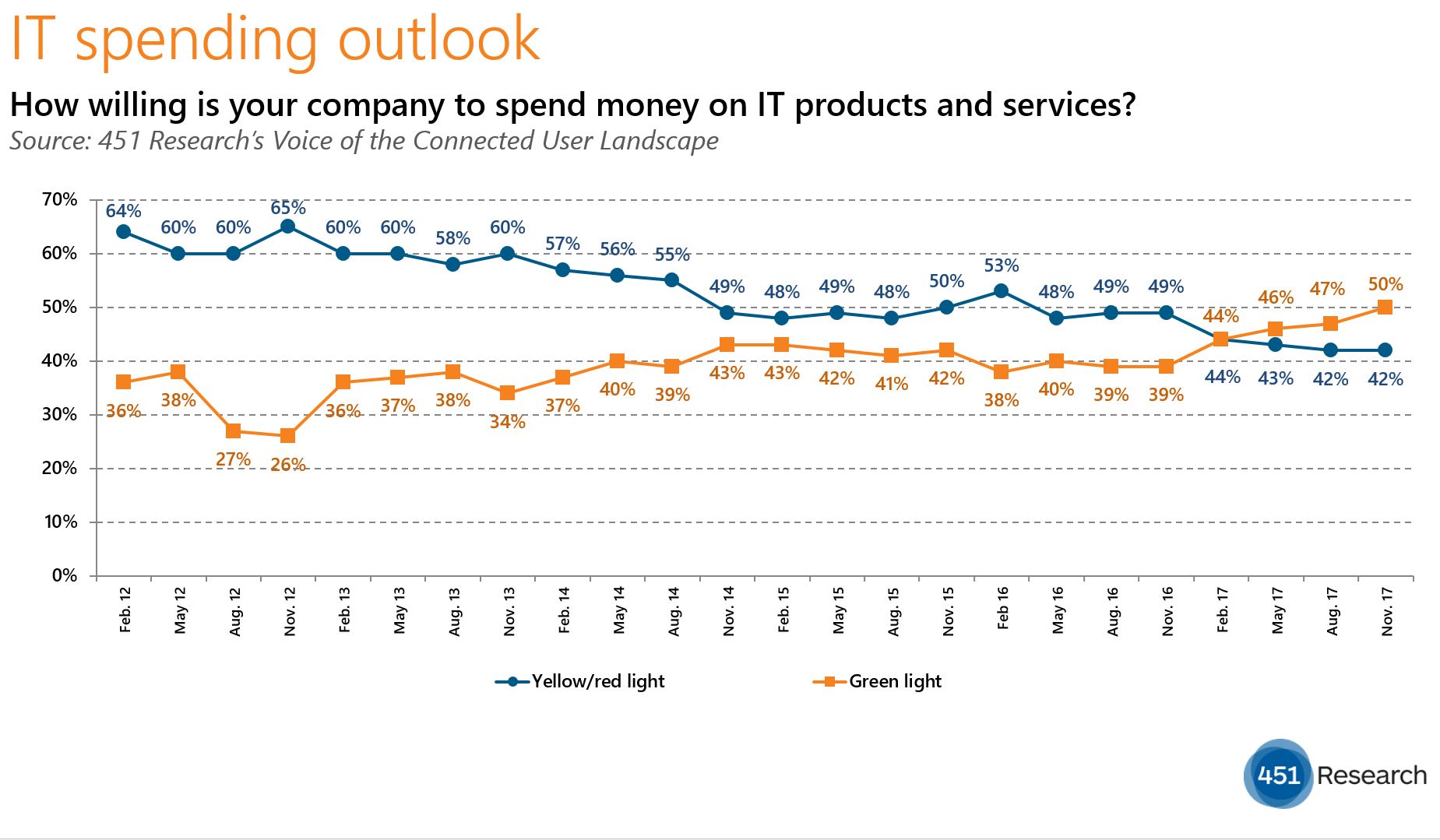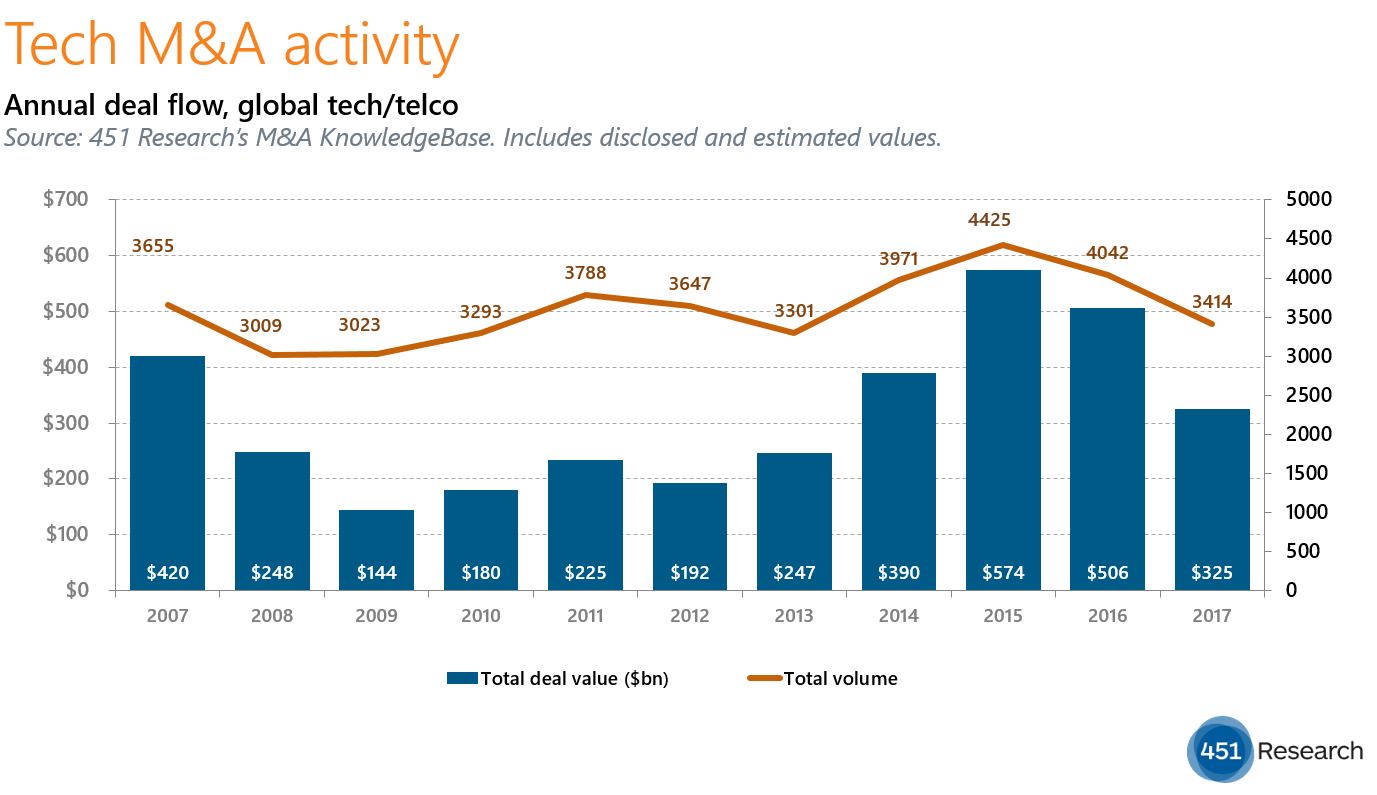by Brenon Daly
Deals in which one private equity (PE) firm sells a company to another PE outfit are sometimes referred to as ‘paper trades.’ These transactions have become increasingly popular in recent years as yet another way for buyout shops to put their record levels of cash to work. By our count, secondary transactions currently account for almost one out of every five deals that PE firms announce, roughly triple their share at the start of the decade.
However, there’s a price for that popularity: the paper is getting a lot more expensive. PE firms paid an average of 4.5x trailing sales for tech vendors owned by fellow buyout shops since the start of 2018, according to 451 Research’s M&A KnowledgeBase. That’s 50% higher than the average PE-to-PE valuation from 2010-17.
There are a lot of reasons for the increase, not least of which is that overall valuations for the broader tech M&A market have been ticking higher, too. But that doesn’t fully explain it.
The M&A KnowledgeBase shows that the average multiple for tech deals since January 1, 2018 with buyout firms on both sides is nearly a full turn higher than the average multiple paid by PE shops to tech providers in that same period. Recent secondaries that secured price-to-sales multiples in the high single digits include Mailgun, Quickbase and the significant minority stake of Kaseya, according to our understanding.
So why do paper trades go off at a premium? Part of it is explained by the view that companies in a PE portfolio have largely been cleaned up, operationally. They are something of a ‘known quantity,’ which takes at least some of the risk out of the purchase.
From there, it’s just a short step for the new buyout owners to one of their favored activities: optimizing the businesses for cash flow. That financial focus, which is undeniably supported by the broad economic growth and continued increases in tech spending, has contributed to the current cycle of ‘pay big now, find a bigger buyer later.’ But if the economy turns, PE firms may well find that high-priced secondaries are one of the first types of deals to disappear, leaving them holding some very expensive paper.



